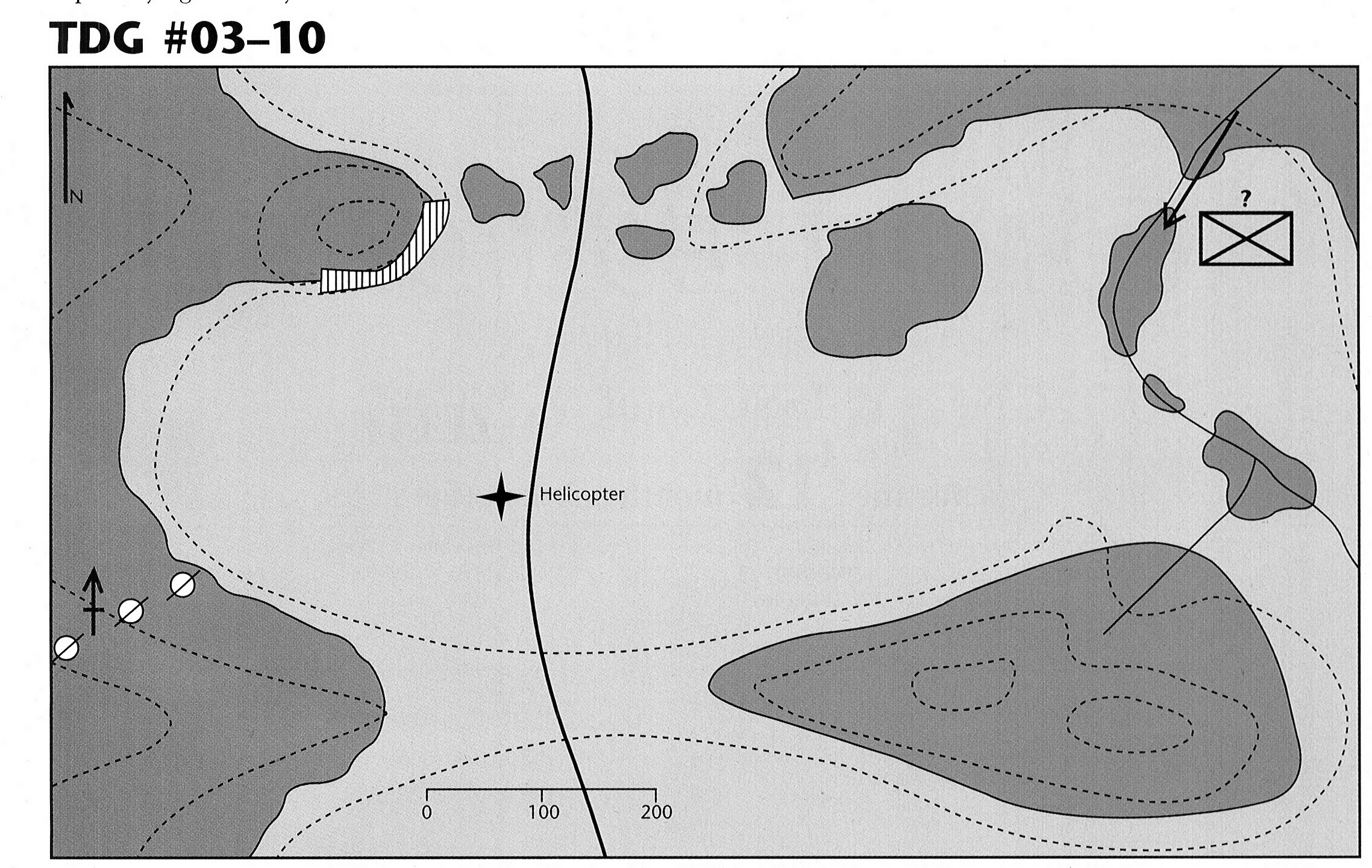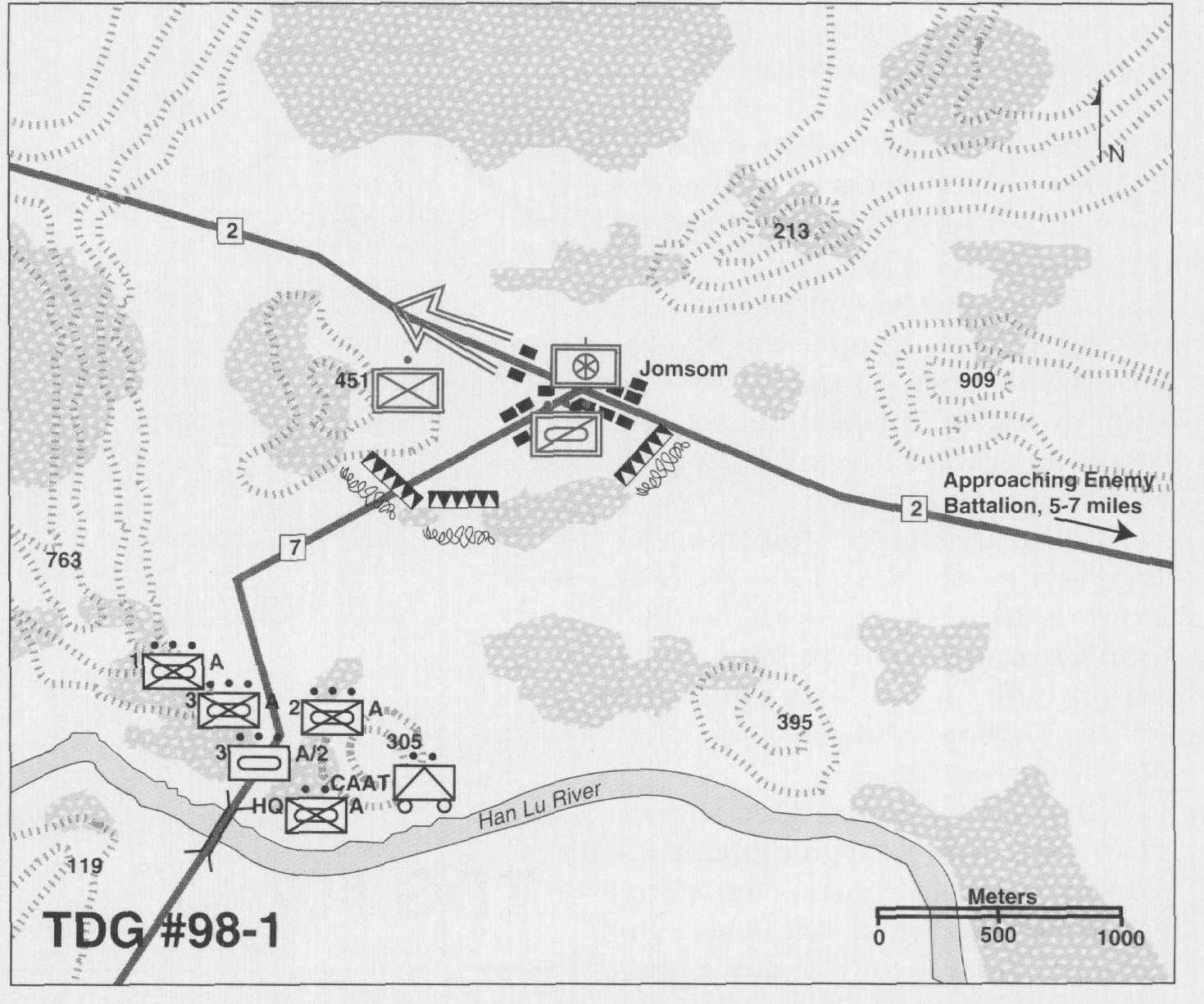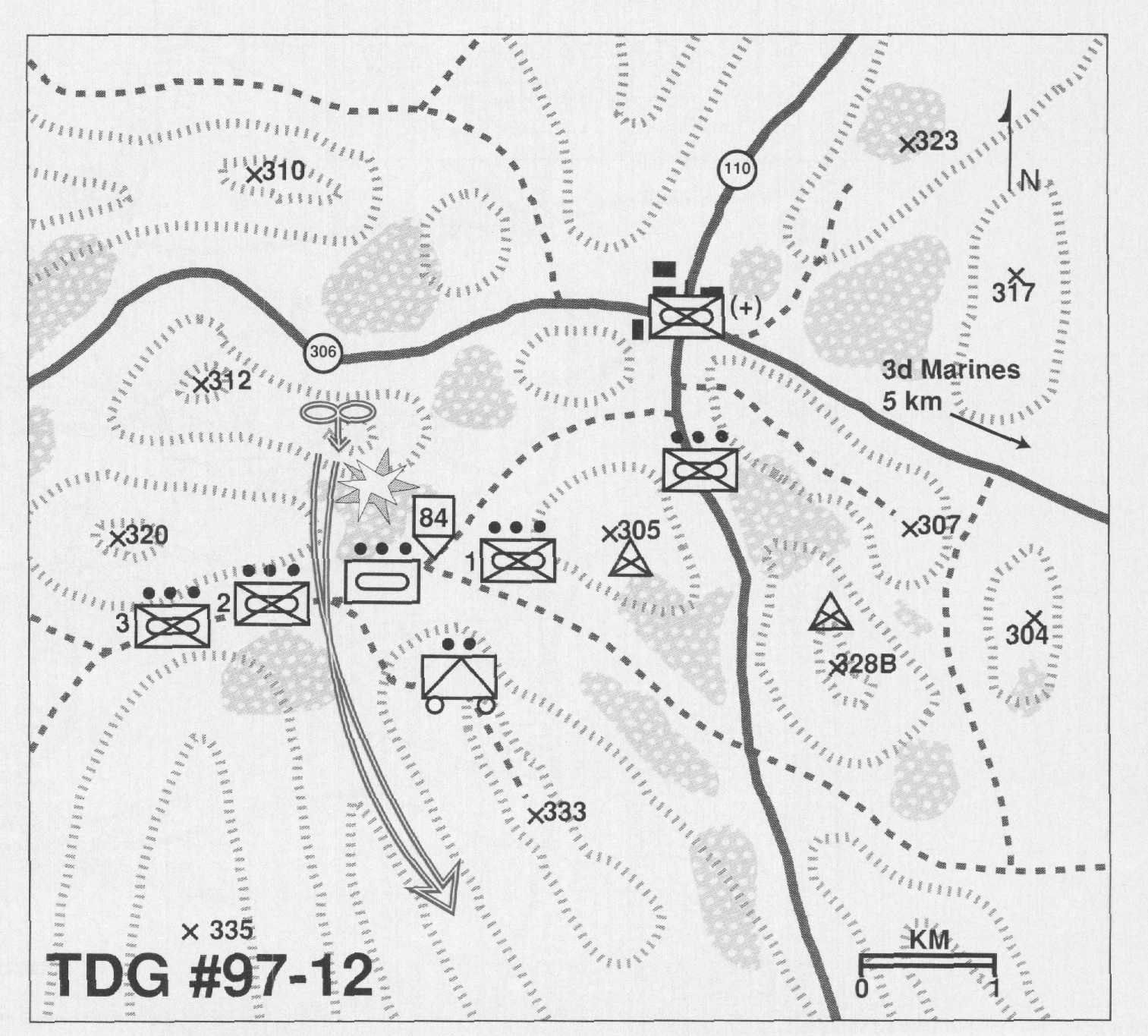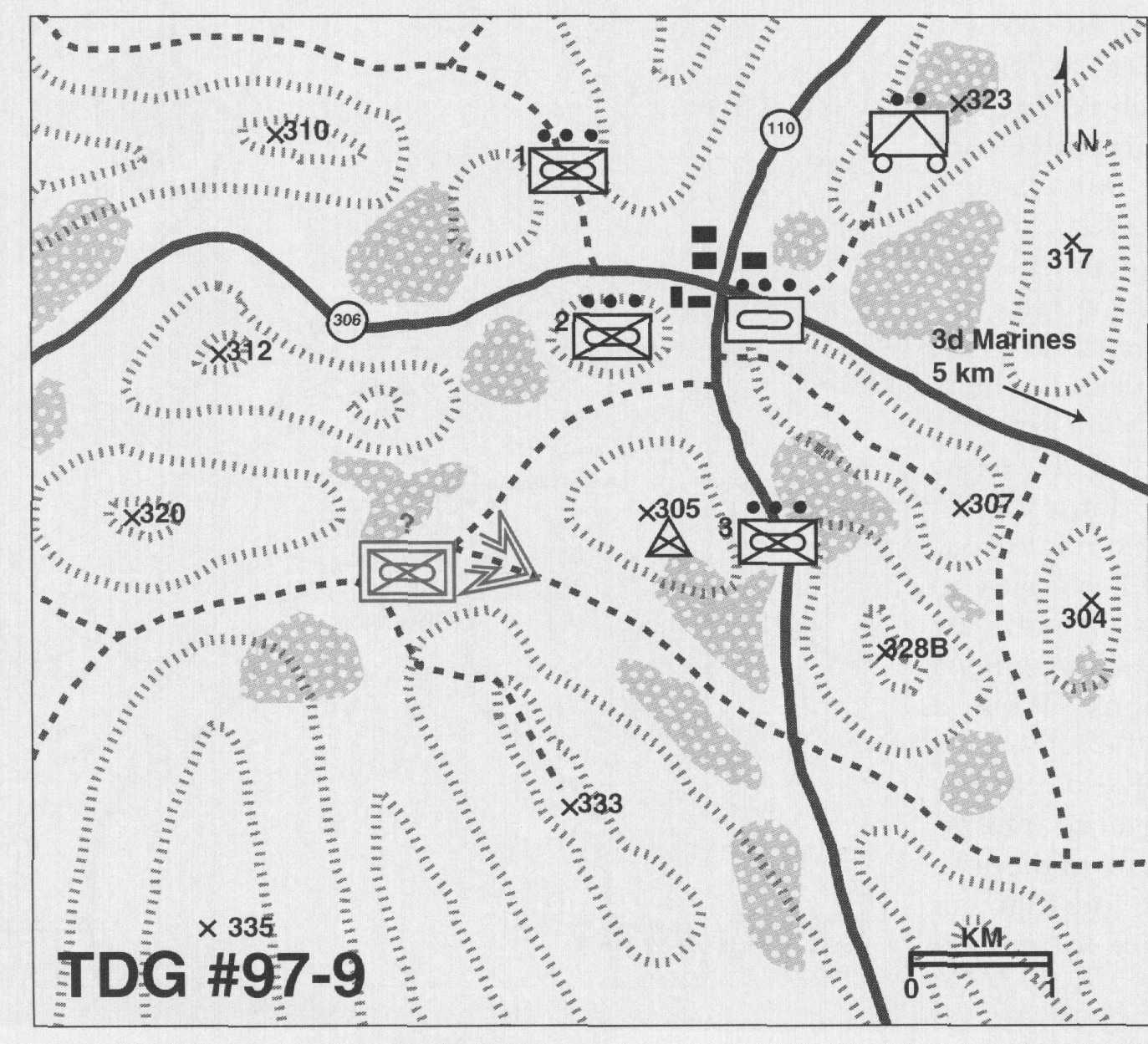Situation
 You are the commanding officer of Bravo Company, Ist Battalion, 2d Marines (1/2). The Marines have landed in the country of New Sherman in order to assist the host nation’s military in defeating an invading conventional force consisting of two mechanized rifle divisions (MRDs). Marine forces have been conducting offensive operations in order to secure the Sheridan Airport and allow unimpeded fly-in of reinforcements. The bulk of the MRD is at least 48 hours away to the north and being interdicted by the bulk of the air assets with poor results due to weather.
You are the commanding officer of Bravo Company, Ist Battalion, 2d Marines (1/2). The Marines have landed in the country of New Sherman in order to assist the host nation’s military in defeating an invading conventional force consisting of two mechanized rifle divisions (MRDs). Marine forces have been conducting offensive operations in order to secure the Sheridan Airport and allow unimpeded fly-in of reinforcements. The bulk of the MRD is at least 48 hours away to the north and being interdicted by the bulk of the air assets with poor results due to weather.
While the Marines have made substantial ground gains, the advance has halted south of Chamberlain Ridge. Highway 1 is only one usable route for our tanks due to road width and bridge capacity. It was thought that airpower would make quick work of enemy resistance, but the weather turned extremely foul 6 days ago to include “buckets” of rain, sleet, fog, and an ever-present cloud cover. Additionally, intelligence collection has been severely restricted. Infantry and division reconnaissance (recon) units have become your primary information sources. The Marines have paid in blood waiting for external feeds on enemy dispositions.
Situation: Cumberland Pass is defended by a motorized rifle battalion (MRB). The MRB is estimated at approximately 70 percent strength with questionable morale due to casualties and the weather. The S-2 (intelligence) believes that the enemy will defend as long as he has a strong combined arms capability.
2d Marines’ mission: At D+9, 2d Marines secures Sheridan Airport in order to allow the fly-in of reinforcements.
Regimental commander’s (CO’s) intent: “We must introduce more forces into the area of operations in order to deal with the remainder of this MRD. I intend to open Highway 1 by attacking the enemy from the rear with a light force aimed at his artillery-his backbone-and moving rapidly through Cumberland Pass before he can react. A rapid attack to the airport, that I believe to be lightly held by ground forces, is essential. My desired end state is control of the airport.”
Task to 1/2: “You are the supporting effort. No later than 0400 on D+9, attack to destroy the enemy’s indirect fire support assets in order to allow the remainder of the regiment to move through Cumberland Pass. Your company has been tasked with conducting an infiltration and attacking the objective. The remainder of the battalion is in trace of the regiment as a reserve.”
Situation update: Your company’s movement along infiltration lane “Bluegray” began on D+7, and you have made no contact along the way. Your company links up at the objective rally point (ORP) at 2100, D+8. You confirm the assault plan (depicted as a dashed line on the map) with your platoon commanders. You move out at midnight (D+9) from the ORP with lst Platoon in the lead. The rain begins … again. It is the hardest rain yet. Visibility is reduced to the man in front of you. At 0230, Ist Platoon checks in on the net and says he’s disoriented. He just passed Checkpoint 5 (CP 5). (There’s no CP 5 on any map.) You strain to look at your map in the dark and decide to personally walk up and find them. When you reach the rear of Ist Platoon, the trail squad leader says that they halted about 1 hour ago, stood up to continue, and the rest of the platoon was gone! Upon returning to your command post, you discover that you have no communications with Ist Platoon or regiment. You do hear the following conversation between your executive officer (X0) and a recon team:
XO: “Station calling. Say again about that artillery battery.”
Recon Team 2: “SA-9 and towed artillery battery located at grid 736 987 with no troops visible. Over.”
You look at your map. That puts the enemy battery less than a click away with Ist Platoon somewhere to your front-lost! You grab the handset.
CO: “Recon 2, are you sure about that position? Over.”
Recon Team 2: “Almost positive. The global positioning system is down, but I matched up the terrain. I can call for fire right now!”
All of this terrain looks the same. As you begin to tell the recon team to adjust fire on the enemy position, the XO grabs your arm and asks, “Shouldn’t we locate Ist Platoon before we call that mission, Sir?”
What do you do?
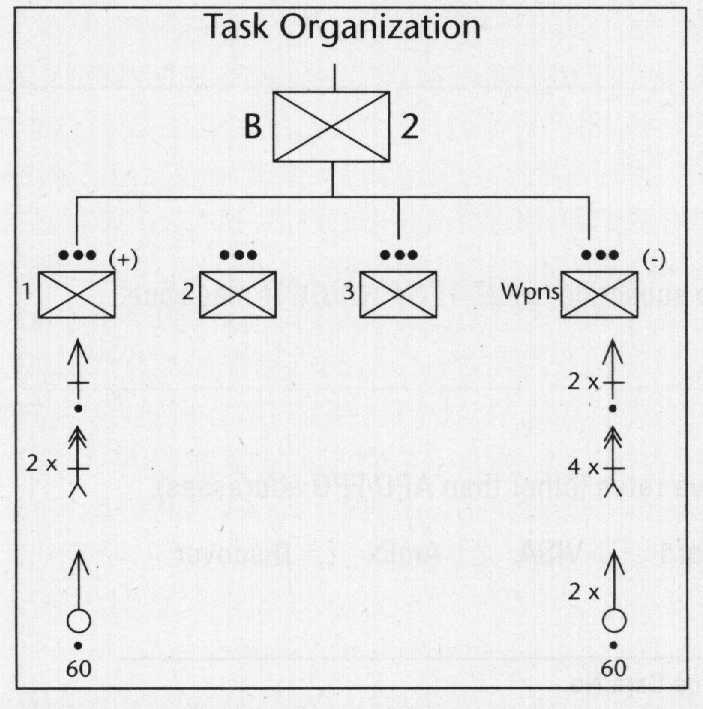 Requirement
Requirement
In a time limit of 10 minutes, issue your orders to your company. Provide a brief rationale for your actions and a sketch of your plan. Submit your solution to Marine Corps Gazette, TDG #03-2, P.O. Box 1775, Quantico, VA 22134, fax 703-630-9147, or e-mail <[email protected]>.
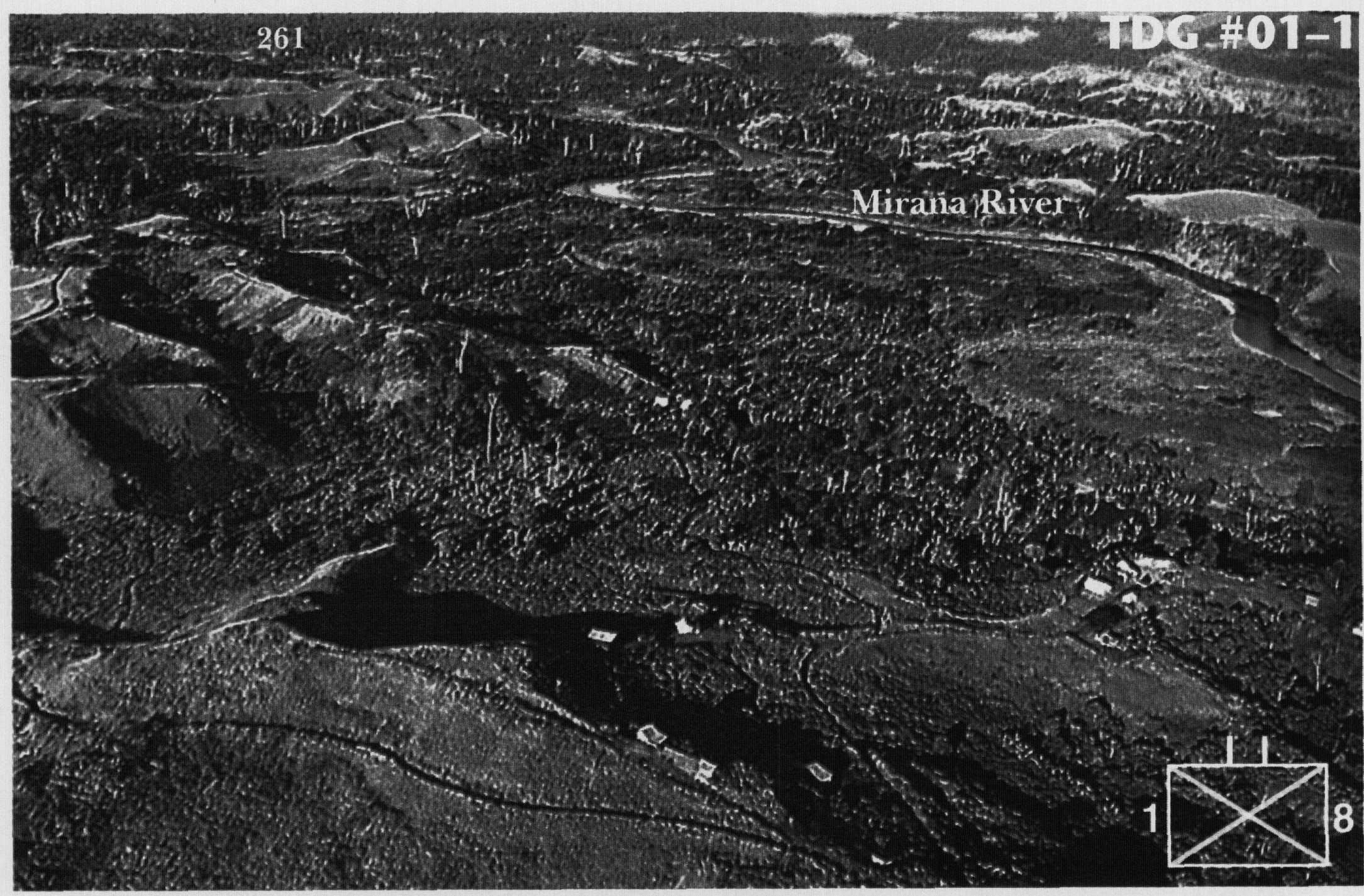 You are the company commander, Bravo Company, Ist Battalion, 8th Marines.
You are the company commander, Bravo Company, Ist Battalion, 8th Marines.


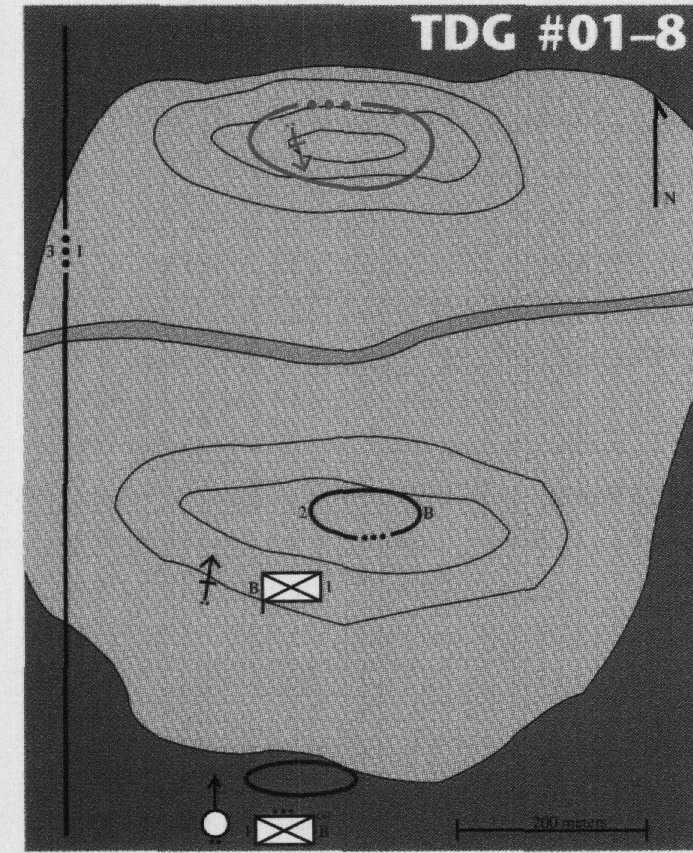
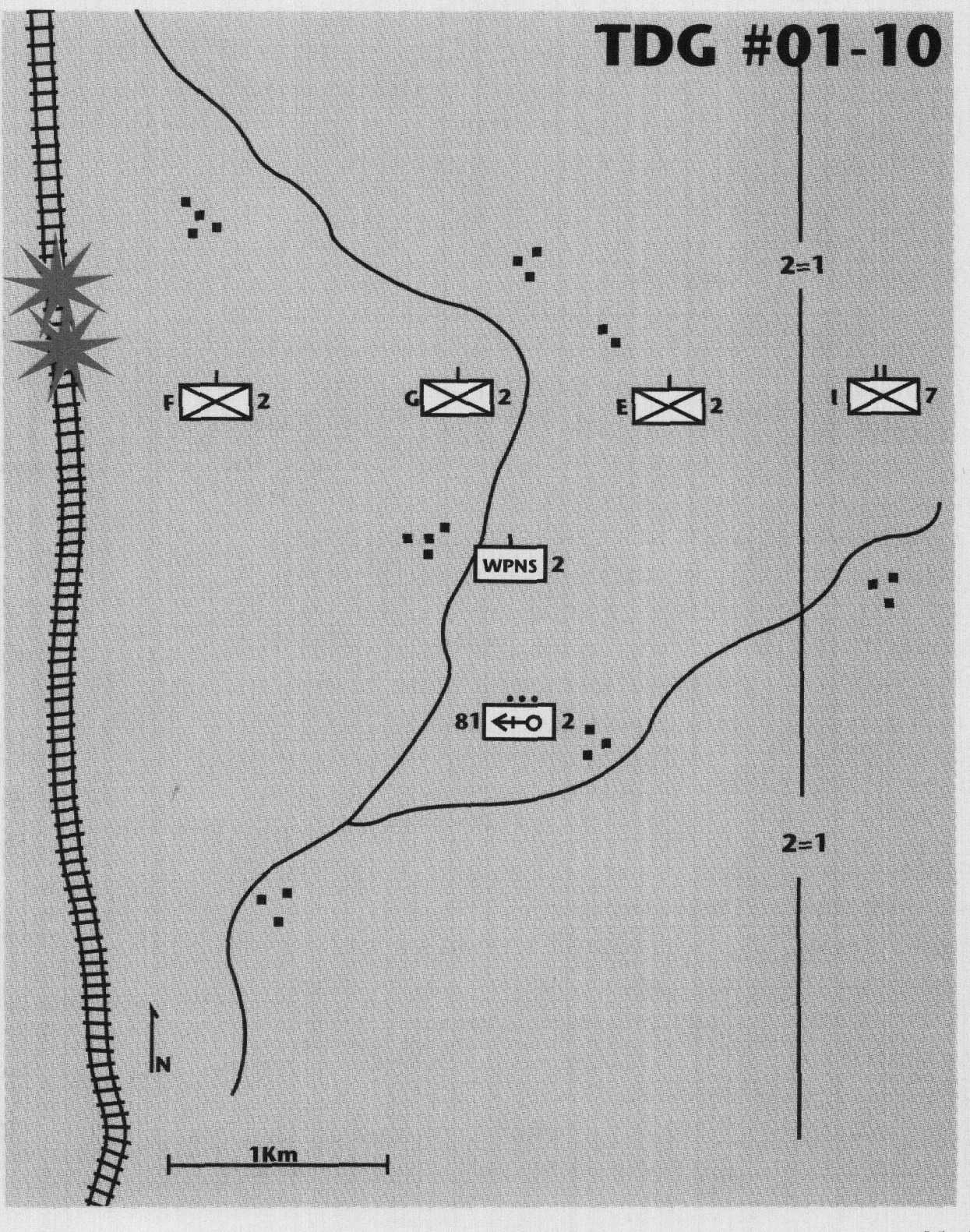

 Requirement
Requirement